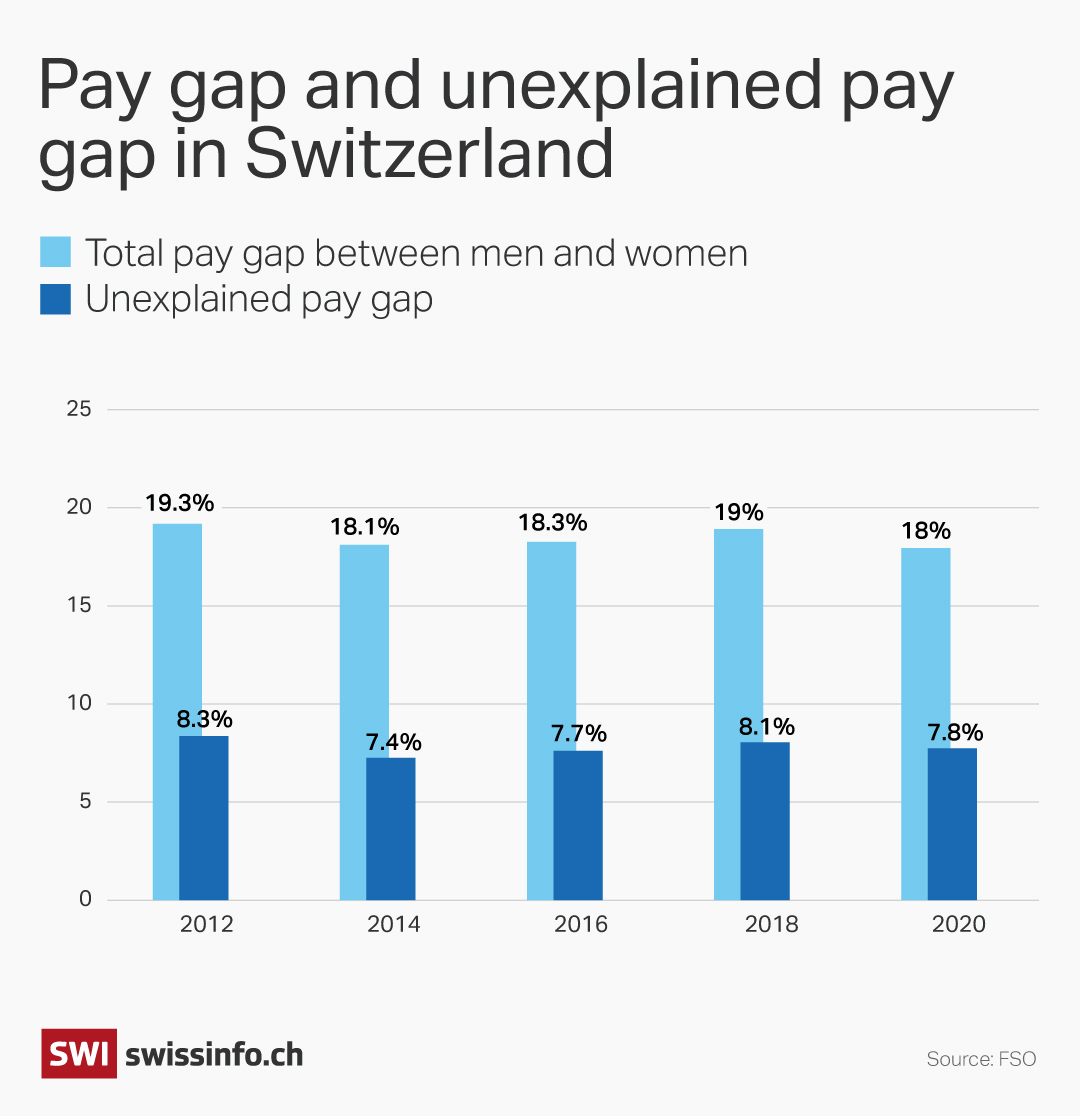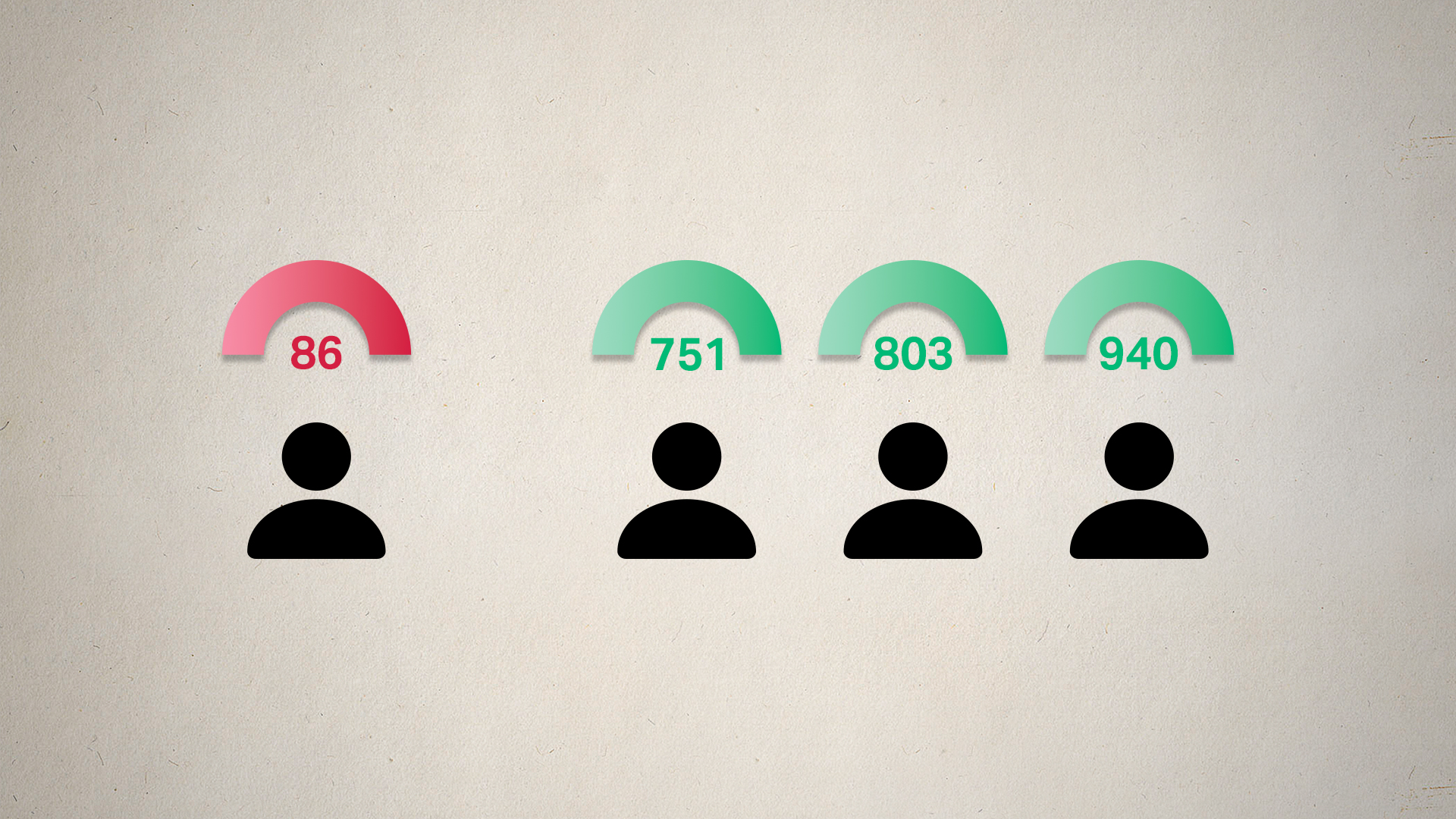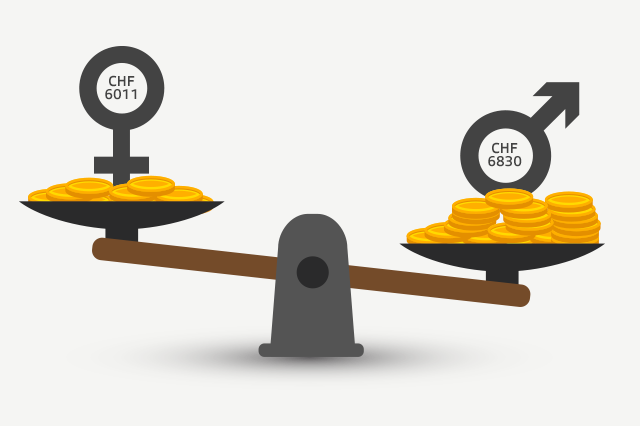
Switzerland leads the way in the fight against ‘unexplained’ wage gaps

Gender equality has been enshrined in the Swiss constitution for more than 40 years. Despite this, unexplainable wage differences between men and women persist. Swiss efforts to close these gaps are attracting global attention, particularly in places where wage differences are large.
An international study External linkspanning 15 well-off countries shows that there are pay gaps between men and women of the same age, with the same level of education, and in jobs with the same part-time conditions. This difference cannot be explained solely by the fact that women tend to work in lower-paid professions. Women are also paid less when working for the same employer and in the same role as their male colleagues.
This “unexplained” part of the pay gap accounts for more than half of the difference between men’s and women’s wages in many countries. Take Japan for example, where the gender pay gap amounts to almost 35%. Part of that difference can be explained but around 25% cannot.
Therefore, it comes as no surprise that the results of an internal pay analysis by the Japanese online trading platform Mercari attracted a great deal of interest in the country. A comparison of employees at the same level and with the same tasks revealed a 7% pay gap between male and female employees.
The company, which was founded in 2013, is a pioneer in Japan. Hardly any other company has voluntarily conducted and published this kind of wage analysis before.
Most surprisingly, Mercari took steps to identify the causes of this pay gap and was then able to reduce it to 2.5%.
What does ‘unexplained’ mean?
When Mercari employees’ wages were analysed according to gender, the figures show differences based on different proportions of management positions held by each gender and the different working arrangements that each gender has.
These differences are also problematic because they reflect the fact that women have different requirements when entering the labour market, for example in terms of promotion opportunities. However, according to the principle of “equal pay for equal work”, only the differences that remain after these factors have been taken into account can be considered “unexplained”.
Want to read our weekly top stories? Subscribe here.
Having “unexplained” pay differences does not necessarily mean that the employer is discriminating against its female employees. According to studies there are also differences in how willing employees are to take risks in wage negotiations, or how they communicate in the workplace that result in different wages.
The American scientist Claudia Goldin, who was awarded the Nobel Prize in Economics in 2023, explains that the preference for having flexible working arrangements also leads to gender-specific differences. For these reasons, differences of up to 5% are generally considered acceptable.
Where Switzerland stands
According to the Federal Office for Gender Equality (FOGE), the unadjusted pay gap between men and women in Switzerland in 2020 was 18% and the “unexplained” pay gap, which adjusts for differences by occupation, industry, education, and professional status, was 7.8%.
The gender pay gap has not narrowed significantly in the last decade. However, it should disappear by 2030 if the national equality strategy External linkachieves its goals.

Switzerland is not a pioneer when it comes to gender equality. Women only gained the right to vote in federal elections in 1972 after a referendum in 1971 and gender equality has only been acknowledged in the constitution since 1981.
Nonetheless, the small Alpine nation leads the way when it comes salary analyses, like the one carried out by Mercari. Already in 2006, Switzerland started using a free analysis tool called LogibExternal link. Since then, companies that are subject to the Act on Public Procurement have had to conduct an analysis of their payroll, and those with an unexplained pay gap of 5% or more are excluded from winning public contracts.
These measures have yielded results. According to a study by Swiss economist Giannina Vaccaro, the unexplained pay gap in companies with more than 50 employees in Switzerland has narrowed by 3.5 percentage points since the introduction of the Logib analysis tool in 2006.
Wage analysis quasi-mandatory
In 2020, a revision of the Gender Equality Act made analysing wages mandatory for all companies with more than 100 employees in Switzerland. In 2021, a Logib module was published that can also be used by small and medium-sized companies with between two and 50 employees.
Before the new obligation was introduced, some private companies had already launched initiatives to reduce the pay gap. One of these was the pharmaceutical company Novartis, which carried out a wage analysis for the first time in 2003 and discovered that 900 female employees earned less than their male colleagues. The total pay gap amounted to CHF3 million ($3.3 million).
Food and beverages company Nestlé has been analysing the wages of its employees since 2015. At first, the multinational used Logib or other external tools but now has its own internal analysis tool. According to Sonia Studer, head of human resources at Nestlé Switzerland, “conducting the salary analysis during the recruitment process sends a clear message to potential candidates that Nestlé values an inclusive and fair work environment.”
The insurance company Mobiliar has been carrying out salary analyses for about 15 years. At the beginning, these reports revealed unexplained wage differences of 5 to 6%. Mobiliar realised that although women and men were hired at roughly the same salary, women’s salaries developed more slowly than men’s over the years. Thanks to organisational and procedural changes, and an algorithm used in salary negotiations, the difference is now less than 2.5%. “This means that despite challenging market conditions, we are able to remain attractive to both existing and potential employees,” says Mobiliar human resources chief Barbara Agoba.

Swiss tools used internationally
Switzerland’s efforts to bridge the gender pay gap have made an impression abroad. “Switzerland has taken on a pioneering role worldwide. To date, there are no tools comparable to Logib that are available free of charge to employers,” Sina Liechti, media spokesperson for the Federal Office for Gender Equality, told swissinfo.ch. Germany and Luxembourg have started using Logib and adapted it for their needs.
In May 2023, the European Union also adopted a directiveExternal link that obliges companies with more than 100 employees to regularly conduct and publish an analysis of their payroll. “As Logib largely meets the requirements of this directive, several European countries have already expressed interest in it,” explains Liechti.
The benefits of analysing payrolls are recognised internationally.
“Our evaluation and remuneration system has improved greatly over the years. We used to be proud of how fair we thought the system was, and honestly would have thought it impossible for there to be such a large pay gap,” Aiko Cho, who led the wage analysis at Mercari, told the Japanese news agency NHKExternal link.
Criticism of the Logib tool
In Switzerland, however, the Logib tool has faced criticism. One problem that has been flagged is that the wage analysis takes into consideration the number of years worked at a company (based an employee’s starting date) rather than overall professional experience. This methodology can have unintended consequences.
“Logib treats the employment of women with longer career breaks as wage discrimination. So, is it better not to hire women after maternity leave, or to stop hiring women altogether?” asks think tank Avenir SuisseExternal link.
This argument shows that statistics have their limits. Conny Wunsch, professor of labour economics at the University of Basel, summed it up for the Swiss German newspaper Neue Zürcher ZeitungExternal link. “In fact, it is not possible to take all wage-determining characteristics into account in comparative statistics,” she says. “That’s why communication is important. The public should better understand that the “unexplained” pay gap does not equate to discrimination against women.”
Edited by Reto Gysi von Wartburg. Adapted from German by dkk/ac/ds

In compliance with the JTI standards
More: SWI swissinfo.ch certified by the Journalism Trust Initiative





































You can find an overview of ongoing debates with our journalists here . Please join us!
If you want to start a conversation about a topic raised in this article or want to report factual errors, email us at english@swissinfo.ch.